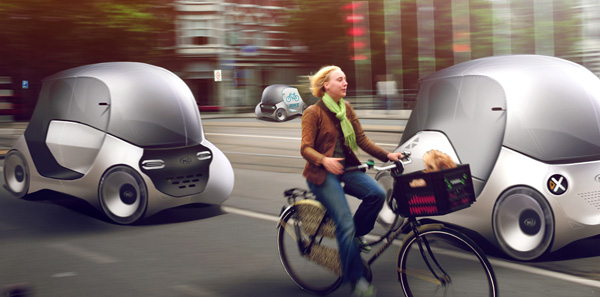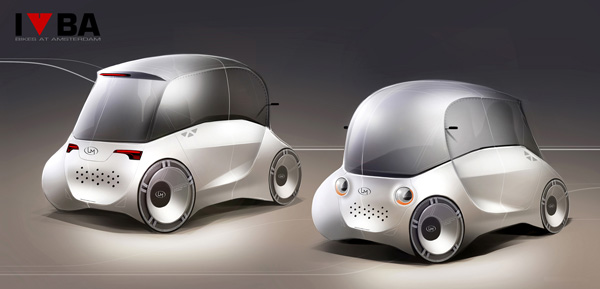The Mukana Concept by
Kirk Dyer
is a vehicle created for developing countries, and more specifically
Zimbabwe. It is built using local manufacturing and materials and
extensively adopting open source methodologies with the goal
of bridging the technological gap between developed and developing
countries, and allowing it to compete with mass produced imports.



The open source nature of the vehicle allows owners to customize it
to their own needs whilst taking advantage of local materials and
skills. The vehicle can be transformed into a safari car, a truck or a
log hauler truck.



The concept is powered by a Stirling engine, which allows it to run
on practically any fuel. The unit acts like a generator in a Chevy
Volt-like electric drivetrain. The design is inspired by the rhino – a
native animal that carries over the metaphors of power, authority and
strength as a symbol of empowerment.



Escape by Robbie McIntosh
Escape is a study of a modern airship that uses inert
(non-combustible) helium gas contained within an internal
balloon/envelope along with leg mounted vectoring fans to achieve lift.



The vehicle offers a “complete travel experience”, thanks to its
ability of transforming from a flying aircraft into a ground based
walker vehicle.



Escape includes a “quadruped robotic walking system” operating mode whch allows it to move on every kind of terrain.



Helium is pumped from an on-board storage tank into the envelope
during flight mode then recaptured and stored when grounded. The goal is
is to reduce the overall vehicle size when grounded making.
Road Hog Concept by Jason Turner
The Road Hog is an electric powered micro car concept that aims at
encouraging muscle car enthusiasts to down size and drive smarter
vehicles, without sacrificing the things they are familiar with and love
about muscle cars. The design is based around a micro package with a
total length under 3,000mm.



The main design inspiration and themes include, aggressiveness, power
and high performance, stance, animal like qualities, exposed functional
elements and working components which create unique visual features
throughout the design.



For more information on the Industrial Design course at Monash University visit
www.artdes.monash.edu.au.
(Image Courtesy: Monash University)





































 The
500L will join the Abarth and the Cabrio in the 500 model range. The
small MPV vehicle offers a 5-seats capacity and is positioned between
the B and C segments.
The
500L will join the Abarth and the Cabrio in the 500 model range. The
small MPV vehicle offers a 5-seats capacity and is positioned between
the B and C segments.
 A
key feature of the platform is its flexibility in terms of wheelbase
length, track width, wheel size and seating positions. Other dimensions
such as the distance between the pedals to the wheel center are always
the same and provide a unified front-end system.
A
key feature of the platform is its flexibility in terms of wheelbase
length, track width, wheel size and seating positions. Other dimensions
such as the distance between the pedals to the wheel center are always
the same and provide a unified front-end system.